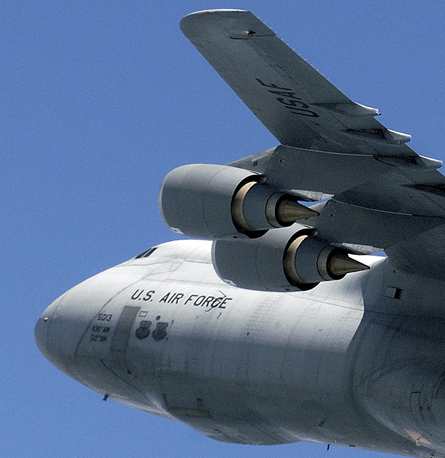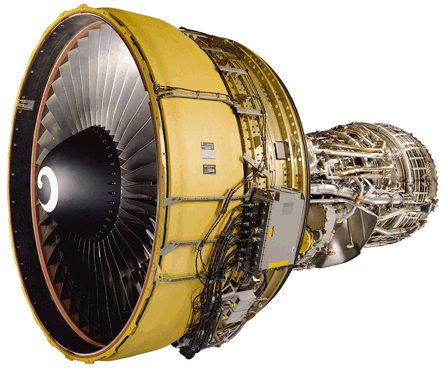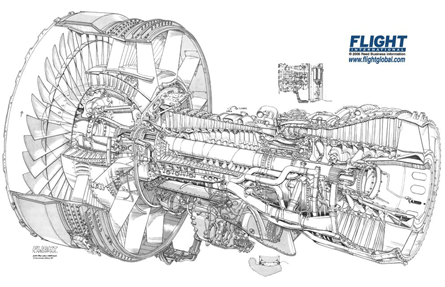General Electric Aircraft Engines this year celebrates the 25th anniversary of the entry into service of the CF6-80C2. Although it is the fourth major evolution of the high-bypass ratio CF6 turbofan introduced in 1971, the CF6-80C2 variant itself now ranks as arguably the most important product in the company's history.
Twenty-five years after Thai Airways took delivery of the first CF6-80C2-powered Airbus A300-600 in a ceremony in Toulouse, France, the turbofan remains by far GE's most popular and diverse seller. More than 3,800 engines have been delivered and installed on 12 widebody applications, establishing GE's lead in a market segment that it has never lost.
SLOW DEMAND
Compared with modern engine programmes, demand for GE's new powerplant in 1985 came slowly. GE's latest widebody products - the GEnx-series powering the Boeing 787 and 747-8 - amassed hundreds of orders before the engines even gained certification.
It was a different era of commercial aircraft sales, however, even in the mid-1980s. At the time Thai Airways launched the CF6-80C2 into revenue service in October 1985, GE had four customers with combined orders of 21 aircraft. Similar results today would almost certainly disappoint GE's shareholders, but the company in 1985 was still struggling to overcome Pratt & Whitney's long dominance in commercial aircraft engine sales.
 |
|---|
© General ElectricThe CF6-80C2 is still finding new applications, such as the C-5M re-engining project |
The arrival of the CF6-80C2 came within 30 years of perhaps GE's biggest commercial engine flop. Although the company pioneered jet engine technology in World War II by re-engineering and improving upon Frank Whittle's original design with the I-40, GE quickly lost ground to rivals as jet-powered airliners came of age in the mid-1950s.
GE's response to the market leader - the P&W JT3D - was the CJ-805-23. Sporting an unusual configuration with the fan stage installed behind the turbine at the rear of the engine, it was selected to power only the Convair 990, which was doomed to be rapidly eclipsed in the commercial market by the Boeing 727. The programme lost more than $80 million.
By the early 1960s, GE's J79 enjoyed greater success in the military market, with the Lockheed F-104, Convair B-58 and McDonnell F-4 as key customers. Even so, P&W remained highly competitive with the J75 and TF30 engines. The turning point for GE, however, came when the US Air Force launched the Lockheed C-5A Galaxy in 1964.
Sensing an opportunity to gain a long-term market advantage, GE proposed the TF39 turbofan with a radical improvement in the bypass ratio. While contemporary engines of the 1960s allowed, at most, three times the amount of air flow to bypass the engine core, the TF39 design promised a step-change increase in efficiency with an 8:1 ratio.
"If all the parts would hang together and maintain their performance levels over the thousands of hours of transport operation, the new engine would have a specific fuel consumption an order of magnitude lower than anything then in service," wrote Robert Garvin, a veteran GE executive and author of Starting Something Big: The Commercial Emergency of GE Aircraft Engines.
 |
|---|
© General ElectricCF6-80C2 packs more power into design |
A few years later, GE leveraged the TF39's advances into an engine aimed at breaking into the commercial aircraft business again. The CF6-6 gained the foothold GE had sought in April 1968, when both American Airlines and United Air Lines selected the Douglas DC-10 tri-jet.
The 40,000lb-thrust (178kN) CF6-6 finally established GE's commercial presence, but the engine itself would soon be considered underpowered as Douglas's requirement grew.
In 1969, GE launched the first major growth version with the CF6-50A, which increased power to 49,000lb thrust by increasing the amount of air flowing through the core. As a result, bypass ratio and fuel economy suffered, but GE compensated by adding two booster stages behind the fan.
AND THEN THERE WERE TWO
The days of the tri-jet market, however, were numbered. Within a decade, Airbus and Boeing launched the A310 and 767 twinjets, respectively, to conquer the same segment. Offering roughly similar seat lay-outs, the new twin-jets would eventually demand significantly higher thrust than GE offered with the baseline CF6-50.
GE's first response to the emerging twin-jet market was the CF6-80A. This new version of the CF6 core was selected for the A310-200 and 767-200, but not because it offered an improvement in thrust. That ultimately decisive feature would have to wait. GE instead aimed the CF6-80A at correcting a design flaw that limited the success of the previous model.
Airlines had discovered that the CF6-50 had one important problem. Perhaps too long at 4.64m (15.2ft), the engine had a tendency to slightly bend during the stress of take-off and landings. Over many such cycles, this characteristic yielded big problems for GE's customers.
"What really happens in take-offs and landings and manoeuvres the rotor and casing structure will have a little bit of flex associated with that," says Chuck Williams, GE's current general manager for CF6 programmes. "Because of that flexing with all the blades moving around inside there, you get some rubbing where the blades touch the fan case."
Over a long period of time, this gradual erosion would cause the dimensions of the fan case to slightly expand. This created a "slow but predictable deterioration in performance," Williams says. Although generating the same power as the CF6-50, GE reduced the length of the CF6-80A by 40cm.
This improved powerplant was the last iteration of the CF6-6 design, optimising the performance of the baseline engine introduced a decade earlier. A new generation of the CF6 was already in development. NASA's energy-efficient engine programme of the late-1970s and early-1980s was developing new advances in propulsion technology for commercial aircraft.
 |
|---|
The beneficiary of this effort would become the CF6-80C2. Its predecessor, the -80A, was designed to generate 48,000-50,000lb thrust. The C-model was designed with the far more ambitious goal of generating between 52,500-63,500lb thrust, a wide spectrum aimed at serving airline powerplant needs through the end of the century.
Although sharing nearly the same dimensions of the -80A, the -80C2 added another low-pressure compressor stage and a low-pressure turbine stage. At the same time, the maximum overall pressure ratio increased to 31.8 from 28.4.
Most importantly, GE increased the diameter of the fan to 2.36m from 2.19m, allowing greater air flow through the fan and the engine core, increasing both efficiency and thrust.
For GE, the CF6-80C2 also served as a proving ground for technologies that would become critical for the powerplants that followed, including the GE90 and the GEnx series. The engine introduced full authority digital engine controls in GE engines, as well as the first low-emission combustor, Williams says.
Twenty-five years later, the CF6-80C2 is showing its age in unexpected ways. GE is currently investigating documented turbine blade cracking.
"It's not clear which operators are having the problem and which are not," Williams says. GE is gathering data on blades inducted during normal maintenance intervals and correlating the data with known city-pairs serviced by the engine to find the cause of corrosion damage.
"In the case of cracking, it's unique to certain operators," Williams says. "Others don't have the issue at all across their entire fleet."
In other ways, however, the CF6-80C2 is proving to be enduring beyond normal limits of engine service life.
"Over the last 15 to 20 years, time on wing has nearly tripled from around 5,000h to 13,000h, and that's actually after an overhaul," Williams says. "Straight out of the factory, the average is 20,000h."
Meanwhile, the CF6-80C2 still remains in demand with new applications, including US Air Force re-engined Lockheed Martin C-5Ms and new Kawasaki C-2 transports.
Source: Flight International
















